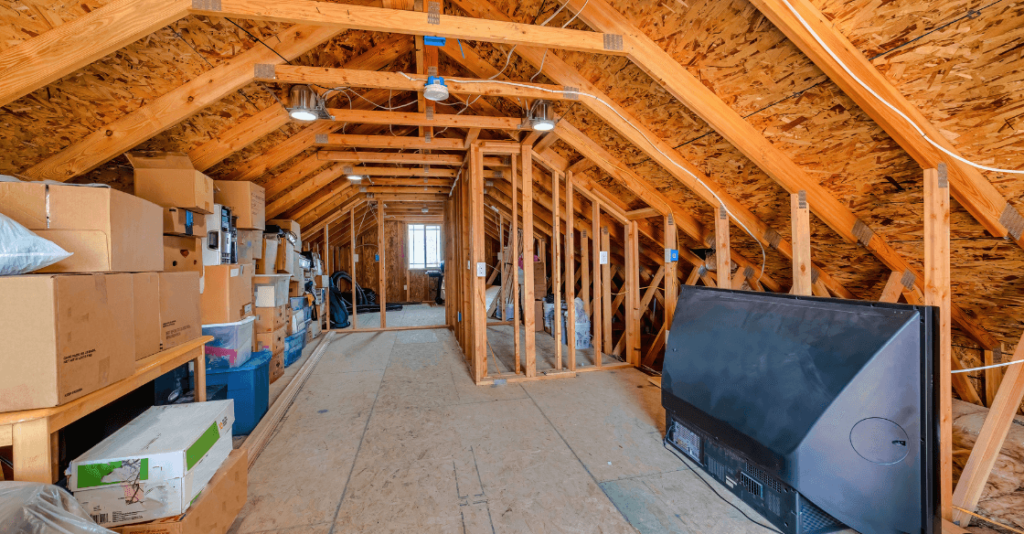Many of you are unclear as to what blown insulation is. For many people, it might be a new term. However, blown insulation is the process of spreading cardboard and loose materials in wall joists and cavities to improve the insulation. To keep heat inside a house, insulation is required. The insulation is improved through the blow-in process.
You only need to check an insulation material’s R-value to determine how effective it is. The material will be more productive if it has a higher number, so check the material before using it.
This page is for you if you need to run new wiring in your attic but have already blown insulation and have no idea how to do it. You can learn how to run a wire through blown insulation in the attic here. How to do it, how to spot existing wires inside, and everything else regarding blown-in insulation. Read on to learn more.
Some wires, such as low-voltage wires, can be buried completely safely beneath the insulation. Telephone wires, computer network wiring, and TV coaxial wiring are low-voltage wires. If you need to drop in some cable but are unsure of how to locate the ideal spot for it, read on.
Simply drill a hole as close to the wall as possible in the ceiling if it is white. The next step is to drill a hole in the insulation of the attic and insert a stiff wire through it. By doing this, you will get a sense of the ideal location. Find the header for the wall where you want to install the cable by digging down through the insulation. Turning off all electrical power is preferable so that you will be safe when working near electrical wires and outlets. It is completely safe for the thermal insulation to touch the wires as long as they are insulated.
The majority of cellulose Insulation receives a class 1 fire rating because it is already treated with fire-retardant materials during manufacturing. Additionally, it lessens the harmful fumes released when other materials burn.
Generally speaking, it is fine for blown-in insulation to touch attic wires. The wires could be fastened to a ceiling joist or the middle of a truss chord. Wire mounting should always be done by a licensed electrician to prevent damage. Check your wire to see if it has any damage. You are good to install blown-in insulation over them if it is not damaged. As these junction boxes are used to protect the connections between the wires, make sure the mixing cover is present as well. Additionally, if the cover is missing, the wires are not shielded.
The Advantages of Blown Insulation
Installing blown-in insulation instead of choosing another type has many benefits. Let us briefly go over the advantages of installing them.
Requires less time
The typical insulation process takes several hours. But with this blown-in insulation, you can finish your work quickly. They only need a short period to install it. One of the main factors in why so many people choose it is the quick installation process.
Eco friendly
This is the insulation to choose if you have ever wanted something wholly eco-friendly. This blown-in insulation only uses eco-friendly materials such as recycled materials and old newspapers. These materials offer complete environmental protection.
Slight mess
The process of insulation is typically quite messy. But with this blown-in insulation, you do not have to clean down the wall or surface. They finish the job by simply passing the hose through any gap that is present. A hole is drilled in the upper part of the wall, and another is drilled closer to the bottom of the wall while insulating the wall. With the aid of a hose, the insulated materials will easily pump through this hole. These holes may later be filled with plastic plugs.
Disadvantageous of Blown-in Insulation
Having blown-in insulation has many benefits, but there are drawbacks as well. The drawbacks of installing them are listed below.
Requires professional assistance
Without a professional’s assistance, blown-in insulation cannot be installed. It is very much hard for you to install them as a DIY project. Because a regular person would find it challenging to operate the machinery and discharge the insulating materials.
Materials could potentially mold.
Despite being treated to resist fire, blown insulation can still smolder in extremely hot conditions. If you want to install blown-in insulation close to the light fixture, that will be a problem.
The insulation settles over time.
The R-value of the insulation starts to decline as the insulation materials settle in the area. The main factor that quickens the rate of settling is moisture. This is also caused by room leaks or other types of moisture leaks. Even if the material has previously been chemically treated to prevent mold growth, the moisture still encourages mold to grow in it.

